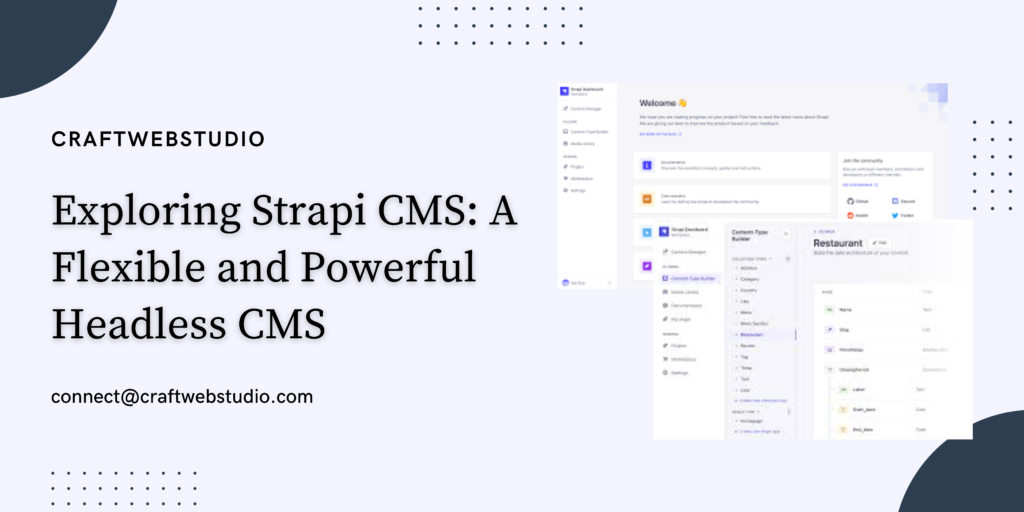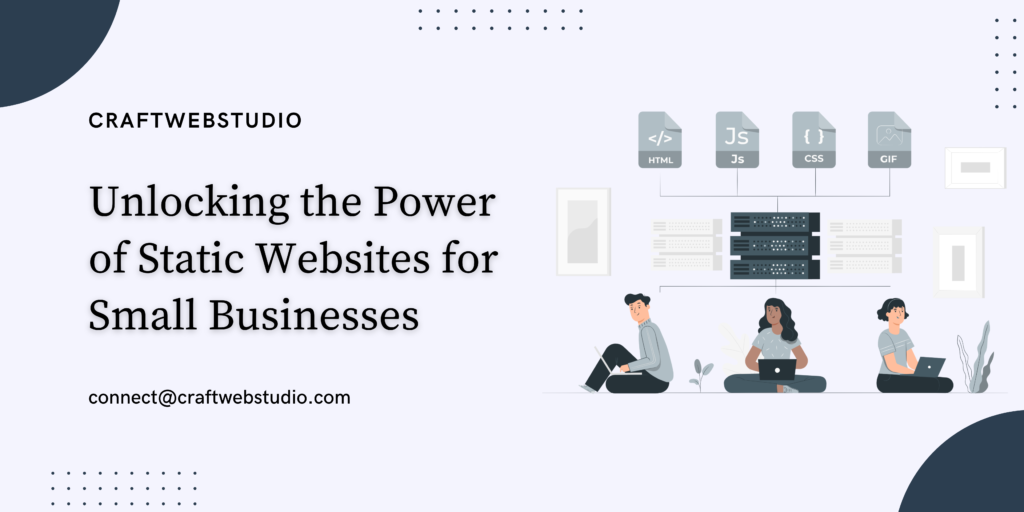If you’re a part of the tech industry, you’ve probably heard about the rise and use of headless CMS. In this blog post, we’ll explore what Strapi is and why it’s a fantastic choice for managing your website’s content. Join us as we explore the ins and outs of Strapi CMS and discover why it’s the go-to choice for powering modern, content-driven experiences.
What is Strapi ?
Strapi CMS is a modern and flexible headless CMS that allows you to seamlessly manage and deliver content across various platforms. It is used to develop website, ecommerce store, mobile application and APIs. Its powerful API enables you to fetch and deliver content to any device or platform. Unlike traditional CMSs, Strapi separates the front-end and back-end, giving you the freedom to integrate with any technology or framework.
- Strapi is super easy to learn – its interface is intuitive and user-friendly.
- You can use it with lots of popular frontend tools like React, Vue, Nuxt.js, Next.js, Angular, Svelte, Sapper, and Flutter, giving you flexibility to build what you want, how you want.
- It connects seamlessly with different frontend frameworks through APIs, so you can create dynamic websites easily.
- Strapi is made for developers and it’s free to use, so anyone can jump in and start building.
Why use Strapi?
Strapi offers a user-friendly, flexible, and cost-effective solution for managing content, making it the ideal choice for businesses looking to streamline their content management processes and deliver exceptional digital experiences.
User-Friendly Interface: Strapi boasts a simple and intuitive interface, making it easy for users of all skill levels to manage content effortlessly.
Cost-Effective Solution: As an open-source platform, Strapi eliminates licensing fees, making it a cost-effective solution for businesses of all sizes.
Seamless Integration: Strapi seamlessly integrates with a variety of databases, including MongoDB and PostgreSQL, offering adaptability to suit diverse project needs.
Flexible API Architecture: With Strapi, developers can create flexible API architectures with ease, thanks to its powerful Content Type Builder tool.
Scalability: Strapi’s lightweight architecture and serverless technology ensure automatic scalability, enabling websites to handle high volumes of traffic without compromising performance.
Pros and Cons of Strapi
Strapi, like any tool, comes with its own set of advantages and drawbacks. Let’s take a closer look at both sides of the coin.
Advantages of Strapi
Below are some of the advantages of using strapi as your headless cms.
1. Versatile and User-Friendly
Strapi interface is designed with simplicity and flexibility in mind. Its intuitive dashboard allows users to create, manage, and organize content effortlessly.
With a visual content editor and customizable fields, users can tailor their content structures to fit their specific needs without the need for extensive technical knowledge. Additionally, Strapi plugin system offers a wide range of functionalities that can be easily integrated into projects, enhancing its usability and versatility.
2. Scalability
Strapi lightweight architecture and serverless technology enable seamless scalability. Whether you’re running a small blog or a large-scale enterprise application, Strapi can efficiently handle fluctuations in traffic and data volume.
Its modular design allows for horizontal scaling, ensuring optimal performance and reliability even as your website grows in complexity and popularity.
3. Customization
One of Strapi key strengths lies in its ability to adapt to diverse project requirements. Developers can define custom content types, data structures, and relationships, tailoring the CMS to suit specific business needs and user experiences.
From simple blog posts to complex e-commerce catalogs, Strapi offers unparalleled flexibility in content modeling and management, empowering developers to build unique and innovative digital experiences.
4. Extensibility
Strapi ecosystem is rich with plugins and integrations that extend its core functionality. Whether you need to integrate with third-party services, implement custom authentication methods, or enhance SEO capabilities, Strapi extensive marketplace of plugins makes it easy to extend and customize your CMS with minimal effort.
With support for popular technologies like GraphQL and REST APIs, developers can seamlessly integrate Strapi with existing systems and workflows, maximizing productivity and collaboration.
5. Headless Architecture
Strapi headless CMS architecture decouples the content management backend from the presentation layer, providing developers with the flexibility to choose the most suitable frontend technologies for their projects.
By separating content creation and delivery, Strapi enables teams to work independently on backend and frontend development, streamlining the development process and accelerating time to market.
Disadvantages of Strapi
Below are some of the disadvantages of using strapi as a headless cms.
1. Learning Curve
While Strapi aims to provide a user-friendly experience, its extensive feature set and customization options can contribute to a steep learning curve, particularly for users with limited technical background.
Understanding concepts such as content types, roles and permissions, and API configurations may require time and effort to grasp fully. Additionally, as Strapi evolves and introduces new features, users may need to continuously update their knowledge and skills to leverage its full potential.
2. Hosting and Maintenance
Self-hosting Strapi requires careful consideration of server infrastructure, security measures, and ongoing maintenance tasks. Setting up and managing servers, databases, and backups can be complex and time-consuming, especially for users without prior experience in server administration.
Moreover, ensuring the security and performance of the hosting environment requires constant vigilance and proactive management to mitigate potential risks and vulnerabilities.
3. Continuous Updates
While regular updates are essential for improving functionality, addressing security vulnerabilities, and introducing new features, they can also pose challenges for users, particularly those with mission-critical applications.
Managing updates effectively requires thorough testing, version compatibility checks, and careful planning to minimize disruptions and ensure a smooth transition to the latest release. Failure to stay current with updates may expose your application to security risks, compatibility issues, and performance limitations over time.
4. Limited Community Support
As a relatively newer entrant in the CMS landscape, Strapi may have a smaller and less mature community compared to established platforms like WordPress or Drupal.
Limited community support can prolong troubleshooting and resolution times, potentially impacting project timelines and deliverables.
5. Complexity for Beginners
While Strapi flexibility and extensibility are major strengths, they can also pose challenges for beginners navigating the platform for the first time.
The abundance of customization options, configuration settings, and development workflows may overwhelm inexperienced users, leading to frustration and confusion. Without adequate guidance and support, beginners may struggle to harness Strapi’s full potential and may require additional training and resources to become proficient in its usage.
Conclusion
In conclusion, Strapi CMS empowers you to efficiently manage and deliver content with ease. Its flexibility, customization options, and extensibility make it an excellent choice for businesses and individuals seeking a powerful content management solution. By embracing Strapi CMS, you can unlock the full potential of your website’s content management experience and provide a seamless user experience across multiple platforms. So why wait? Discover the power of Strapi CMS and take your content management to new heights.




